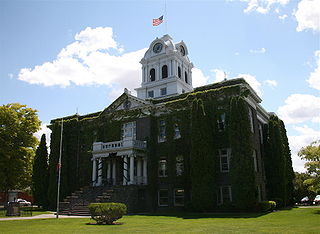
Crook County is one of the 36 counties in the U.S. state of Oregon. As of the 2020 census, the population was 24,738. The county seat is Prineville. The county is named after George Crook, a U.S. Army officer who served in the American Civil War and various Indian Wars.

John Newton Williamson was an American rancher and politician in the state of Oregon. A native Oregonian, he served in both chambers of the Oregon Legislative Assembly representing central and eastern Oregon in the late 19th century. A Republican, he then served in Congress from 1903 to 1907 and was involved in the Oregon land fraud scandal.
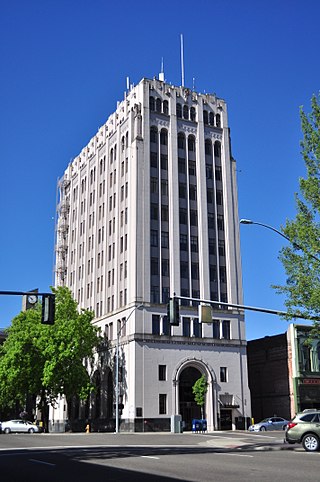
The Capitol Center is a high-rise office building in downtown Salem, Oregon, United States. Finished in 1927, it was originally known as the First National Bank Building and owned by Salem businessman Thomas A. Livesley. The eleven story building was designed by architect Leigh L. Dougan and is the tallest office building in Salem. Located at State and Liberty streets it is part of Salem's downtown historic district and was added to the National Register of Historic Places in 1986 as the Old First National Bank Building.

The Drake Park Neighborhood Historic District is located adjacent to Drake Park near the historic downtown area in Bend, Oregon, United States. Because of the unique and varied architecture in the Drake Park neighborhood and its close association with the early development of the city of Bend, the area was listed on the National Register of Historic Places in 2005.
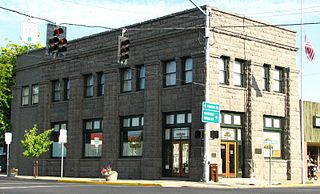
The A. R. Bowman Memorial Museum is a local history museum in Prineville, Oregon, United States. Opened in 1971, the museum is housed in the old Crook County Bank Building which is listed on the National Register of Historic Places. The museum is run by the Crook County Historical Society and highlights the history of Crook County and central Oregon. Its collection includes many original pioneer artifacts, a large railroad exhibit, ranching and timber industry displays, furniture, garments, and historic photographs. The museum also has a research library.

The Crook County Bank is a historic bank building in Prineville, Oregon, United States. It was built in 1910 using stone blocks from a local quarry. The building was first use as a bank and then occupied by title and insurance business until 1971, when ownership was transferred to Crook County for use as a local history museum. Today, the Crook County Bank building is the home of the A. R. Bowman Memorial Museum. Because of its importance to the history of Prineville, the Crook County Bank Building is listed on the National Register of Historic Places.
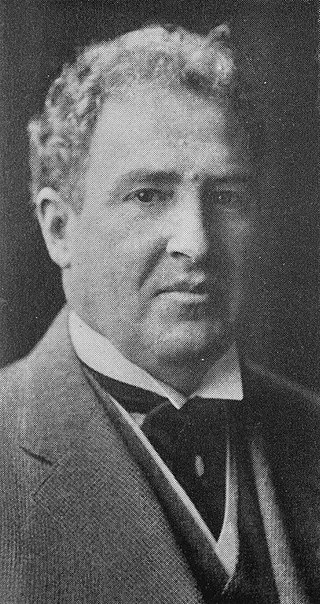
John Virginius Bennes was an American architect who designed numerous buildings throughout the state of Oregon, particularly in Baker City and Portland. In Baker City he did an extensive redesign of the Geiser Grand Hotel, designed several homes, and a now-demolished Elks building. He moved to Portland in 1907 and continued practicing there until 1942.
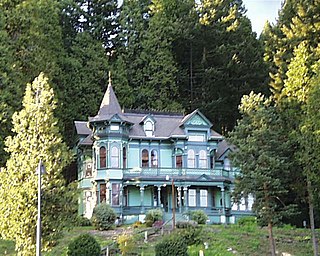
Walter David Pugh was an American architect based in Salem, Oregon, United States.

The Whidden–Kerr House and Garden, also known as High Hatch Estate, is a historic property located in the unincorporated communities of Riverwood and Dunthorpe in Multnomah County, Oregon, south of Portland and north of Lake Oswego, Oregon. William M. Whidden of Whidden & Lewis designed the house in 1901, to be his own residence, and it was built the same year. Whidden and his family lived in the house until 1911, when he sold it to businessman Thomas Kerr, Sr. (1896–1925). It later passed to Kerr's son, Thomas Kerr, Jr., and ultimately remained with the Kerr family until 1987.
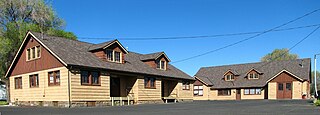
The Lamonta Compound – Prineville Supervisor's Warehouse is a complex of buildings and related infrastructure owned an operated by the Ochoco National Forest in Prineville, Oregon, United States. Built by the Civilian Conservation Corps in 1933–1934, it is the headquarters for field operations in the national forest and is typical of projects carried out by the CCC on behalf of the Forest Service. It represents that era's shift in the Forest Service's architectural vision toward comprehensive site planning, as well as its policy evolution from custodial superintendence of the national forests toward active natural resource management.
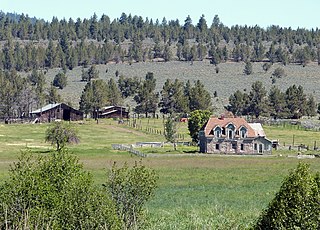
The Roba Ranch is a pioneer ranch located near the small unincorporated community of Paulina in Crook County, Oregon. The ranch is named for George and Mary Roba, sheep ranchers who acquired the property in 1892. Most of the important ranch buildings were constructed by the Roba family between about 1892 and 1910. Today, the ranch covers 1,480 acres (6.0 km2) and is privately owned. The ranch was listed on the National Register of Historic Places in 2007.
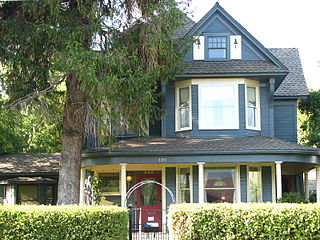
The Marion Reed Elliott House is a historic house in Prineville, Oregon, United States. Built in 1908, it is the largest and best-preserved Queen Anne style house in Prineville. It is also significant as one of a handful of surviving structures that were built by prominent local contractor Jack Shipp (1858–1942). Marion Elliott (1859–1934), an educator and successful attorney, lived in the house from its construction until his death. Both men's careers benefited from the economic boom that occurred in Prineville in the first decades after railroads began reaching Central Oregon around 1900, the period when the Elliott House was built.

The Old First National Bank of Prineville is a historic commercial building in Prineville, Oregon, United States.

Horace Preston Belknap was an American pioneer medical doctor, businessman, and a state legislator from the state of Oregon. Belknap was one of the first physicians to establish a medical practice in Central Oregon. He also served three terms in the Oregon House of Representatives as a Republican legislator, representing a large and rural district in central and southern Oregon.
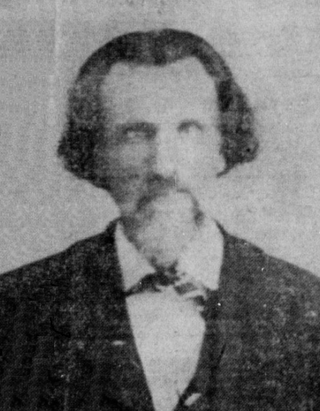
Francis Barnett Prine was an American pioneer who was one of the first settlers to homestead in the Ochoco country of central Oregon. When he was young, Prine traveled with his family from Missouri to Oregon's Willamette Valley over the Oregon Trail. He served in the 1st Oregon Volunteer Infantry Regiment during the American Civil War. Prine later moved to the Central Oregon, where he established several businesses in what became Prineville, Oregon, a town named in his honor.

The Benjamin Cornelius Jr. House, also known as the Benjamin Cornelius Jr. and Rachel McKinney Cornelius House, is a historic residence located in Forest Grove, Oregon, United States. It was built around 1873 by carpenter Harley McDonald, one of the first settlers to offer architectural services in Oregon, and is one of only two houses designed by McDonald remaining in Forest Grove. Its Italianate form and Gothic details are highly distinctive in Forest Grove, while its veranda exhibits Colonial styling. Benjamin and Rachel Cornelius, the first occupants of the house, had crossed the Oregon Trail via the Meek Cutoff in 1845; the Cornelius family was instrumental in the foundation of Hillsboro and the town of Cornelius during their lifetime, and Benjamin was also prominently involved in early real estate transactions in the area. Benjamin was murdered in 1881, during the couple's tenure at this house.

Cass Adelbert Cline was an American pioneer who was an early settler in central Oregon. Cline’s family moved to Oregon when he was a small child, settling west of the Cascade Mountains near Roseburg. As a young man, Cline moved to central Oregon and claimed homestead land along the Deschutes River. He later became a well-known dentist, property developer, and race horse breeder. Today, a waterfall on the Deschutes River, a nearby mountain group, and a state park bear his name.

Crook County Courthouse is a courthouse located in Prineville, Oregon, United States. The present courthouse, built in 1909, replaced an earlier courthouse built in 1889. In November 2021, voters of Crook County, Oregon approved a bond measure to raise up to $35 million to build a new Justice Center on a different site.


















